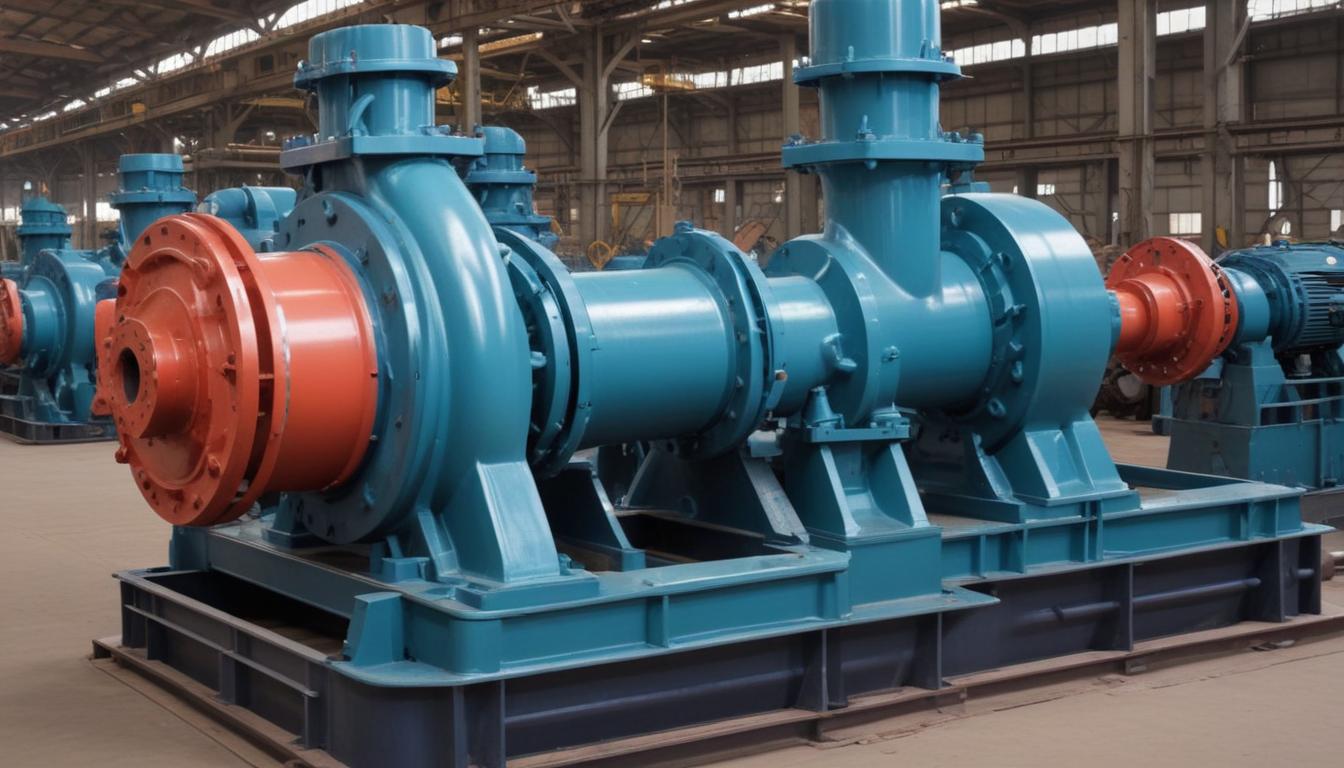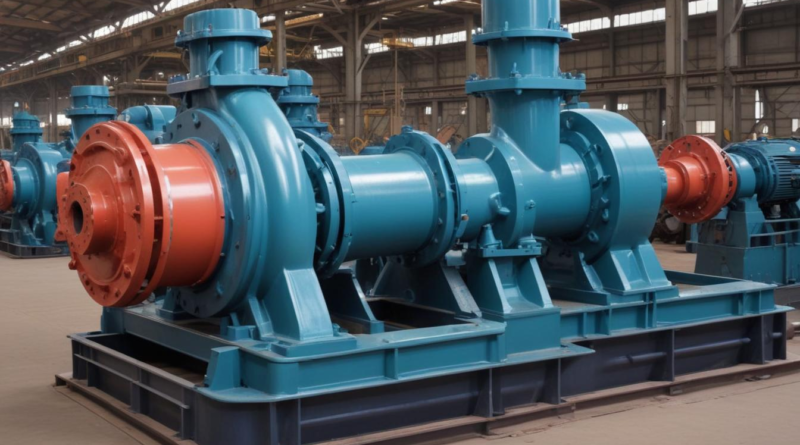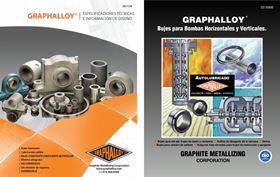pumps used in the pulp and paper industry
In the pulp and paper industry, a diverse range of pumps is essential to ensure the smooth operation of various processes. Centrifugal pumps are among the most commonly used due to their ability to handle large volumes of water and process fluids efficiently. These pumps operate by converting rotational kinetic energy to hydraulic energy, making them ideal for general-purpose applications.
Positive displacement pumps are another critical category, particularly when precise flow control is required. These include:
– Gear Pumps: Suitable for handling high-viscosity fluids, gear pumps are reliable for consistent flow rates.
– Diaphragm Pumps: Ideal for abrasive and corrosive materials, diaphragm pumps offer durability and ease of maintenance.
– Peristaltic Pumps: Used for applications requiring gentle handling of fluids, such as in the conditioning stages of paper production.
Pulp pumps and paper pumps are specialized types tailored to the unique demands of the industry. Pulp pumps are designed to manage the thick, fibrous mixtures involved in pulp processing, ensuring efficient transportation without clogging. Paper pumps handle the delicate balance of water and fiber in paper manufacturing, maintaining optimal flow rates to achieve consistent paper quality.
| Type of Pump | Key Characteristics | Typical Applications |
|---|---|---|
| Centrifugal Pumps | High flow rates, low to medium pressure | Water circulation, general liquid transfer |
| Gear Pumps | Handles high viscosity, precise flow control | Slurry transport, chemical dosing |
| Diaphragm Pumps | Resistant to abrasive and corrosive fluids | Pulp slurry, chemical handling |
| Peristaltic Pumps | Gentle fluid handling, easy maintenance | Conditioning processes, slurry transport |
| Pulp Pumps | Designed for thick, fibrous mixtures | Pulp processing, fiber transportation |
| Paper Pumps | Optimized for water-fiber balance | Paper manufacturing, flow rate maintenance |
Additionally, submersible pumps are employed in applications where the pump needs to operate underwater or within sealed environments, providing flexibility and efficiency in space-constrained areas. Mechanical seals and corrosion-resistant materials are often integrated into pump designs to enhance longevity and performance under the harsh conditions typical of pulp and paper operations.
Understanding the specific requirements of each application allows for the optimal selection of pump types, ensuring reliability and efficiency throughout the production process.
applications in the pulp and paper industry
In the pulp and paper industry, pumps are integral to a multitude of processes, ensuring the seamless movement and management of materials and fluids essential for production efficiency and product quality. These applications encompass the transportation of raw materials, precise chemical dosing, effective water circulation, and the handling of process-specific fluids.
Pulp Preparation and Transport involves moving fibrous materials from the pulping stage to subsequent processing areas. Pulp pumps are engineered to handle thick, viscous mixtures, preventing clogging and maintaining consistent flow rates essential for downstream operations.
Chemical Dosing is critical for processes such as bleaching, sizing, and other chemical treatments that directly impact paper quality. Accurate metering of chemicals is achieved using positive displacement pumps like diaphragm and gear pumps, which ensure precise delivery and minimize waste, thereby enhancing both efficiency and cost-effectiveness.
Process Water Circulation is vital for maintaining the continuous flow of water used in washing pulp and rinsing paper sheets. Centrifugal pumps are typically employed in these applications due to their ability to handle large volumes of water efficiently, supporting the recycling and reuse of process water to promote sustainability.
Boiler Feedwater systems require high-purity water to prevent scaling and corrosion within boilers. Specialized boiler feed pumps are used to transfer water under high pressure, incorporating advanced filtration and treatment mechanisms to ensure the necessary water quality is maintained, thus safeguarding boiler integrity and performance.
Stock Preparation involves blending pulp with water to achieve the desired consistency for paper formation. Both pulp pumps and paper pumps are essential in this stage, providing precise control over flow rates to ensure uniform paper thickness and consistent quality throughout the production run.
Coating and Finishing stages require the application of various coatings and additives to the paper surface. Pumps such as peristaltic pumps and diaphragm pumps are preferred for their ability to handle sensitive and abrasive materials without compromising the finish quality. These pumps ensure even application of coatings, enhancing the durability and appearance of the final product.
To better illustrate these applications, the following table outlines the specific pump types utilized across different stages of the pulp and paper production process:
| Process Stage | Key Application | Recommended Pump Type |
|---|---|---|
| Pulp Preparation | Transporting thick pulp mixtures | Pulp Pumps |
| Chemical Dosing | Accurate metering of bleaching agents | Diaphragm Pumps |
| Process Water Circulation | Continuous water flow for washing | Centrifugal Pumps |
| Boiler Feedwater | High-pressure water transfer | Boiler Feed Pumps |
| Stock Preparation | Blending pulp and water | Pulp Pumps, Paper Pumps |
| Coating and Finishing | Application of coatings and additives | Peristaltic Pumps, Diaphragm Pumps |
Beyond these primary applications, pumps are also essential in managing waste streams and recovering valuable by-products, thereby supporting environmental compliance and sustainability initiatives. Efficient pump operation in these areas ensures high throughput in recycling processes while adhering to stringent environmental regulations.
Advancements in automation and smart control systems are increasingly being integrated within pump operations to optimize performance, reduce energy consumption, and enhance reliability. These innovations enable real-time monitoring and adaptive control, allowing for proactive maintenance and minimizing downtime.
The strategic application of the appropriate pump types within these various processes not only enhances operational efficiency but also contributes to the overall sustainability and economic viability of pulp and paper manufacturing facilities. By ensuring reliable and efficient fluid handling, pumps play a crucial role in maintaining the high standards and continuous improvement essential to the industry’s success.
selection criteria
Selecting the appropriate pump for specific operations within the pulp and paper industry involves a comprehensive evaluation of various factors to ensure optimal performance, reliability, and cost-effectiveness. Key considerations include:
Fluid Characteristics: Understanding the properties of the fluid to be pumped is paramount. This includes assessing the viscosity, abrasiveness, corrosiveness, and the presence of solids or fibers. For instance, pulp pumps must handle thick, fibrous mixtures without clogging, necessitating robust designs with wear-resistant materials.
Flow Rate and Pressure Requirements: The desired flow rate and the pressure at which the fluid must be delivered determine the pump’s capacity and type. High flow rates with low to medium pressure needs are typically addressed by centrifugal pumps, whereas processes requiring precise flow control and higher pressures may benefit from positive displacement pumps.
Material of Construction: Pumps in the pulp and paper industry are often exposed to harsh conditions. Selecting materials that offer resistance to corrosion, abrasion, and wear extends the pump’s lifespan and reduces maintenance costs. Common materials include stainless steel, alloyed metals, and specialized polymers.
Energy Efficiency: Energy consumption is a significant operational cost. Selecting energy-efficient pumps not only reduces expenses but also supports sustainability initiatives. Variable frequency drives (VFDs) and optimized pump sizing contribute to enhanced energy performance.
Maintenance and Reliability: Pumps are critical to uninterrupted operations. Choosing designs that are easy to maintain and have a high mean time between failures (MTBF) minimizes downtime. Features such as replaceable seals, modular components, and access for routine inspections are advantageous.
Compatibility with the Process: The pump must be compatible with the specific process requirements. This includes selecting the right type of pump—whether centrifugal, gear, diaphragm, or peristaltic—to match the application’s demands. For example, paper pumps require precise flow rates to maintain water-fiber balance during paper formation.
Size and Space Constraints: The physical footprint of the pump installation must align with the available space within the facility. Compact designs or submersible options may be necessary in space-limited environments, ensuring seamless integration without compromising performance.
Cost Considerations: Both initial capital expenditure and ongoing operating costs must be evaluated. While high-quality pumps may have a higher upfront cost, their durability and efficiency can lead to long-term savings. Budget constraints often necessitate balancing cost with the required performance and durability.
Regulatory and Environmental Compliance: Compliance with industry standards and environmental regulations is essential. Pumps must meet criteria related to emissions, energy usage, and safety standards, ensuring that operations adhere to legal and environmental guidelines.
Control and Automation Requirements: Modern pump systems often incorporate automation and smart controls for enhanced performance monitoring and management. Integration with supervisory control and data acquisition (SCADA) systems allows for real-time monitoring, automated adjustments, and predictive maintenance, increasing operational efficiency.
The following table provides a summary of how different pump types align with these selection criteria:
| Selection Criteria | Centrifugal Pumps | Positive Displacement Pumps | Pulp Pumps | Paper Pumps |
|---|---|---|---|---|
| Fluid Characteristics | Suitable for low to medium viscosity liquids | Handles high viscosity and precise flow | Designed for thick, fibrous mixtures | Maintains water-fiber balance |
| Flow Rate and Pressure | High flow rates, low to medium pressure | Lower flow rates, higher pressure | Consistent flow rates for pulp transport | Precise flow control for paper formation |
| Material of Construction | Stainless steel, corrosion-resistant alloys | Wear-resistant materials for abrasive fluids | Robust materials to handle fibrous slurry | Materials ensuring water-fiber consistency |
| Energy Efficiency | High efficiency with VFD options | Efficient for variable flow needs | Optimized for energy-intensive pulp transport | Energy-efficient designs for continuous operation |
| Maintenance and Reliability | Ease of maintenance with accessible components | Low maintenance due to fewer moving parts | Reliable operation with minimal downtime | High reliability for uninterrupted paper production |
| Compatibility with Process | General-purpose applications | Specific applications requiring precise dosing | Tailored for pulp processing needs | Optimized for paper manufacturing requirements |
| Size and Space | Variety of sizes, some compact | Generally larger, depending on type | Designed to fit process layouts | Compact for integration into paper lines |
| Cost | Cost-effective for high-volume applications | Higher initial cost, lower long-term maintenance | Investment justified by operational efficiency | Cost balanced with quality control benefits |
| Regulatory Compliance | Meets standard industry regulations | Compliant with specific process standards | Adheres to environmental and safety standards | Ensures compliance in paper production processes |
| Control and Automation | Integrates with automated systems | Compatible with smart control technologies | Supports automated pulp transport systems | Facilitates automated paper flow management |
By meticulously evaluating these criteria, manufacturers can select pumps that not only meet the immediate operational needs but also contribute to long-term efficiency and sustainability. The right pump selection ensures that each application within the pulp and paper industry operates smoothly, maintains high product quality, and achieves economic viability.
maintenance and troubleshooting
 Regular maintenance is crucial to ensure the longevity and optimal performance of pumps within the pulp and paper industry. Implementing a structured maintenance program minimizes downtime, reduces the risk of unexpected failures, and maintains high efficiency across all operations.
Regular maintenance is crucial to ensure the longevity and optimal performance of pumps within the pulp and paper industry. Implementing a structured maintenance program minimizes downtime, reduces the risk of unexpected failures, and maintains high efficiency across all operations.
Preventive Maintenance Strategies involve scheduled inspections and routine tasks designed to detect and address potential issues before they escalate. Key preventive measures include:
- Routine Inspections: Regularly examining pumps for signs of wear, leakage, and abnormal vibrations helps identify problems early. Visual inspections should focus on seals, bearings, and coupling integrity.
- Lubrication: Ensuring that moving parts are adequately lubricated reduces friction and wear. It is essential to follow manufacturer recommendations for lubrication intervals and types of lubricants used.
- Component Replacement: Proactively replacing worn or damaged parts, such as seals, bearings, and impellers, prevents minor issues from leading to significant failures.
- Performance Monitoring: Tracking pump performance metrics, including flow rate, pressure, and energy consumption, helps identify deviations from normal operating conditions that may indicate underlying issues.
Predictive Maintenance leverages advanced technologies to forecast potential pump failures based on data analysis. Techniques employed include:
- Vibration Analysis: Monitoring vibration patterns can detect imbalances, misalignments, or bearing failures in pumps.
- Thermography: Infrared imaging identifies overheating components, which may signal electrical or mechanical issues.
- Oil Analysis: Evaluating lubricant condition provides insights into wear particle contamination and overall machinery health.
Troubleshooting Common Issues requires a systematic approach to quickly identify and resolve pump problems. Common challenges and their solutions include:
| Issue | Possible Causes | Troubleshooting Steps |
|---|---|---|
| Reduced Flow Rate |
|
|
| Excessive Vibration |
|
|
| Overheating |
|
|
| Leakage |
|
|
Maintenance Best Practices for pumps in the pulp and paper industry include:
- Documentation and Record-Keeping: Maintain detailed records of all maintenance activities, including inspections, repairs, and replacements. This documentation aids in tracking the pump’s performance history and scheduling future maintenance.
- Training and Expertise: Ensure that maintenance personnel are adequately trained and knowledgeable about the specific pump types and their operational requirements, such as pulp pumps and paper pumps.
- Spare Parts Management: Keep critical spare parts in stock to facilitate quick repairs and minimize downtime during unexpected failures.
- Regular Testing: Periodically test pump performance under various conditions to ensure they operate within specified parameters and respond appropriately to changes in the process.
- Lubrication Management: Implement a strict lubrication schedule and use the correct types of lubricants to prevent premature wear and ensure smooth operation.
Addressing maintenance and troubleshooting proactively not only extends the lifespan of pumps but also enhances the overall efficiency and reliability of the pulp and paper production process. By adhering to these best practices, facilities can mitigate risks, optimize performance, and maintain high standards of product quality.
future trends and innovations
Emerging technologies are poised to significantly transform pump operations within the pulp and paper industry, driving improvements in efficiency, sustainability, and reliability. One notable trend is the integration of smart pump systems, which leverage the Internet of Things (IoT) and advanced sensors to provide real-time monitoring and data analytics. These intelligent systems enable predictive maintenance, allowing operators to anticipate and address issues before they lead to downtime. By continuously tracking parameters such as vibration, temperature, and flow rates, smart pumps enhance operational visibility and facilitate informed decision-making.
Advancements in materials science are also contributing to the evolution of pumps used in this sector. The development of corrosion-resistant alloys and wear-resistant coatings extends the lifespan of pumps, particularly those handling abrasive and corrosive fluids typical in pulp and paper applications. Additionally, the use of lightweight composite materials reduces the overall weight of pump assemblies, improving energy efficiency and easing installation in space-constrained environments.
Energy efficiency remains a critical focus, with manufacturers innovating to reduce the power consumption of pumps. The adoption of variable frequency drives (VFDs) allows for precise control of pump speeds, optimizing energy use based on real-time demand. Coupled with high-efficiency motor designs, these technologies can significantly lower the energy footprint of pulp and paper operations, aligning with global sustainability goals.
The shift towards automation and digitalization is another key trend. Automated pump control systems enhance precision in fluid handling, ensuring consistent product quality and reducing human error. Integration with Supervisory Control and Data Acquisition (SCADA) systems enables centralized management of pump operations, streamlining workflows and enhancing overall plant efficiency. Additionally, the incorporation of machine learning algorithms can optimize pump performance by analyzing historical data and adjusting operational parameters dynamically.
Sustainable practices are increasingly influencing pump design and application. Pumps that facilitate water recycling and waste reduction are becoming essential, as the industry seeks to minimize its environmental impact. Innovations such as closed-loop pumping systems ensure the efficient reuse of water and chemicals, reducing the need for fresh resources and lowering operational costs. Furthermore, the development of biodegradable lubricants and eco-friendly materials supports the industry’s commitment to environmental stewardship.
Modular pump designs offer flexibility and scalability, allowing facilities to easily expand or modify their pumping systems as production requirements evolve. These designs simplify the installation process and enable quicker upgrades, ensuring that pump infrastructure can adapt to changing technological and operational demands without extensive overhauls.
To illustrate these future-oriented developments, the following table highlights key innovations and their anticipated impacts on pump operations within the pulp and paper industry:
| Innovation | Description | Impact |
|---|---|---|
| Smart Pump Systems | Integration of IoT and advanced sensors for real-time monitoring and predictive maintenance. | Reduces downtime, enhances operational efficiency, and enables data-driven decision-making. |
| Advanced Materials | Use of corrosion-resistant alloys, wear-resistant coatings, and lightweight composites. | Extends pump lifespan, improves energy efficiency, and facilitates easier installation. |
| Variable Frequency Drives (VFDs) | Allows precise control of pump speeds to match real-time demand. | Optimizes energy usage, reduces operational costs, and enhances process flexibility. |
| Automation and Digitalization | Integration with SCADA systems and the use of machine learning for performance optimization. | Streamlines operations, improves accuracy, and enables centralized management. |
| Sustainable Pumping Solutions | Development of closed-loop systems and biodegradable lubricants. | Minimizes environmental impact, supports water recycling, and reduces resource consumption. |
| Modular Pump Designs | Flexible and scalable pump units that can be easily reconfigured. | Facilitates easy upgrades and expansions, ensuring adaptability to changing production needs. |
Furthermore, 3D printing and additive manufacturing are beginning to influence pump component production, allowing for rapid prototyping and customized parts tailored to specific applications within the pulp and paper industry. This technology accelerates the development cycle and enables the creation of complex geometries that enhance pump performance and durability.
The push towards renewable energy integration is also noteworthy. Pumps designed to operate efficiently with renewable power sources, such as solar or wind energy, are gaining traction. These pumps contribute to reducing the carbon footprint of pulp and paper facilities and support the transition to more sustainable energy practices.
In summary, the future of pump technology in the pulp and paper industry is characterized by increased intelligence, sustainability, and adaptability. These innovations not only improve the efficiency and reliability of pump operations but also align with broader industry trends towards digital transformation and environmental responsibility. By embracing these advancements, manufacturers can ensure their pumping systems remain competitive and capable of meeting the evolving demands of the market.




